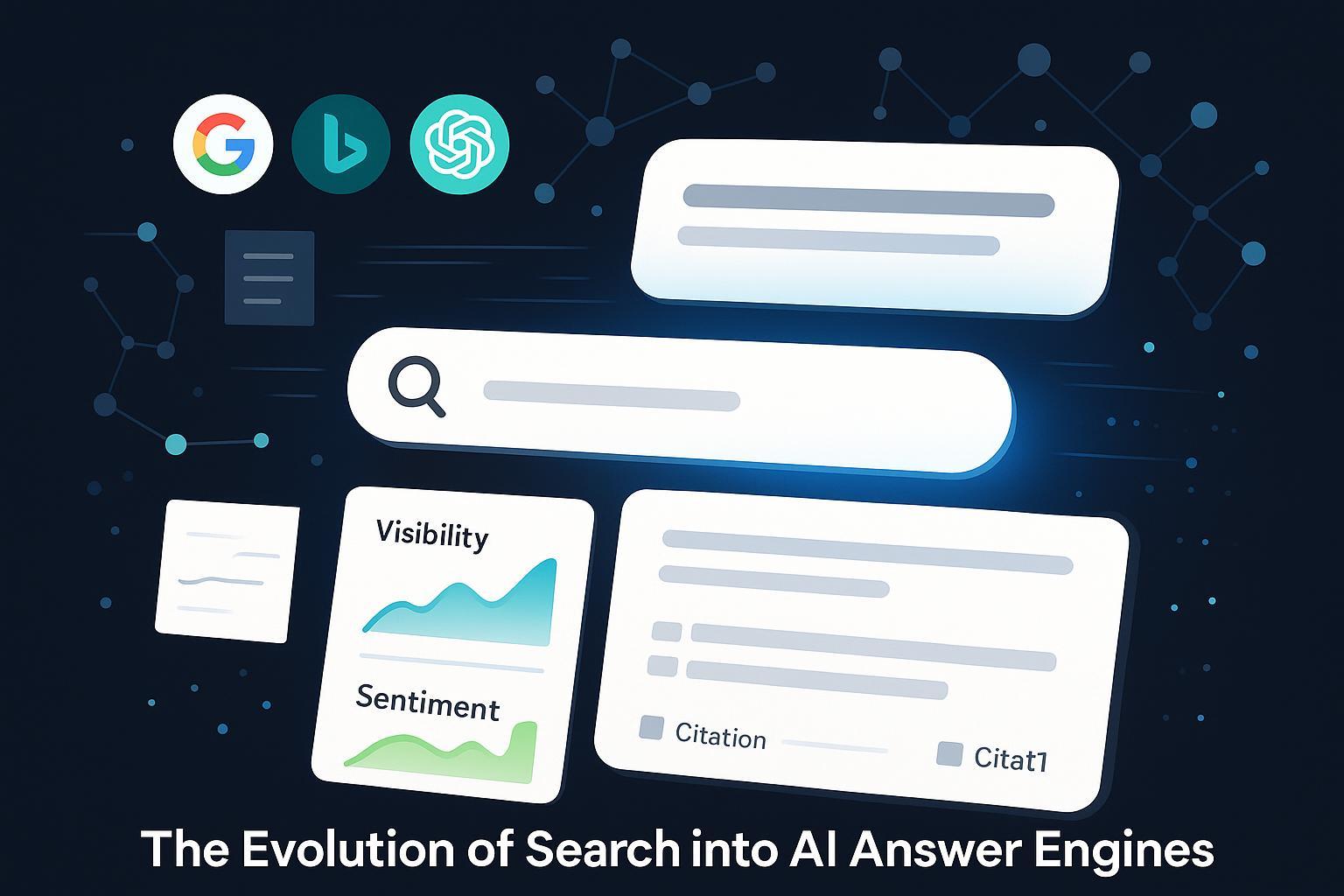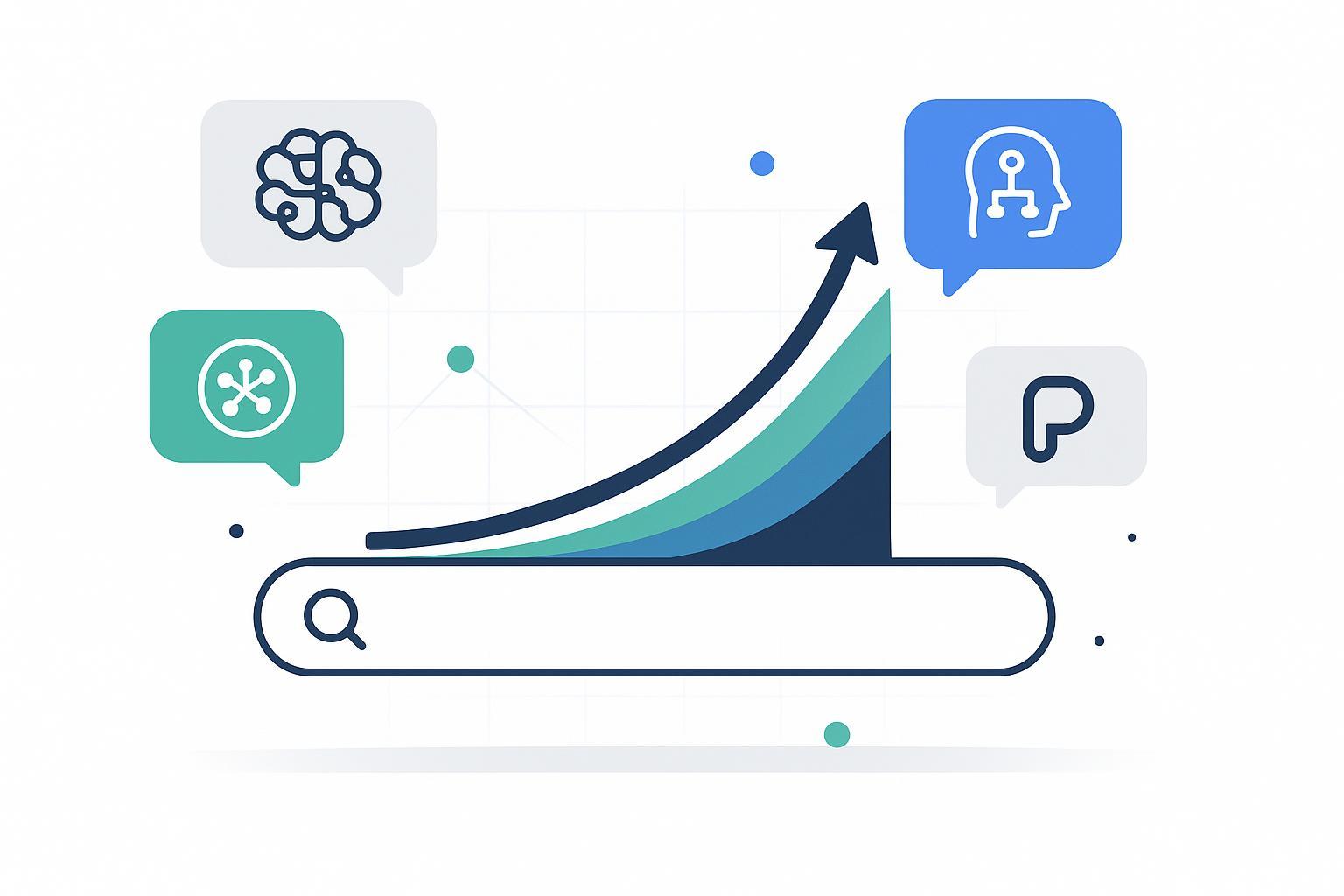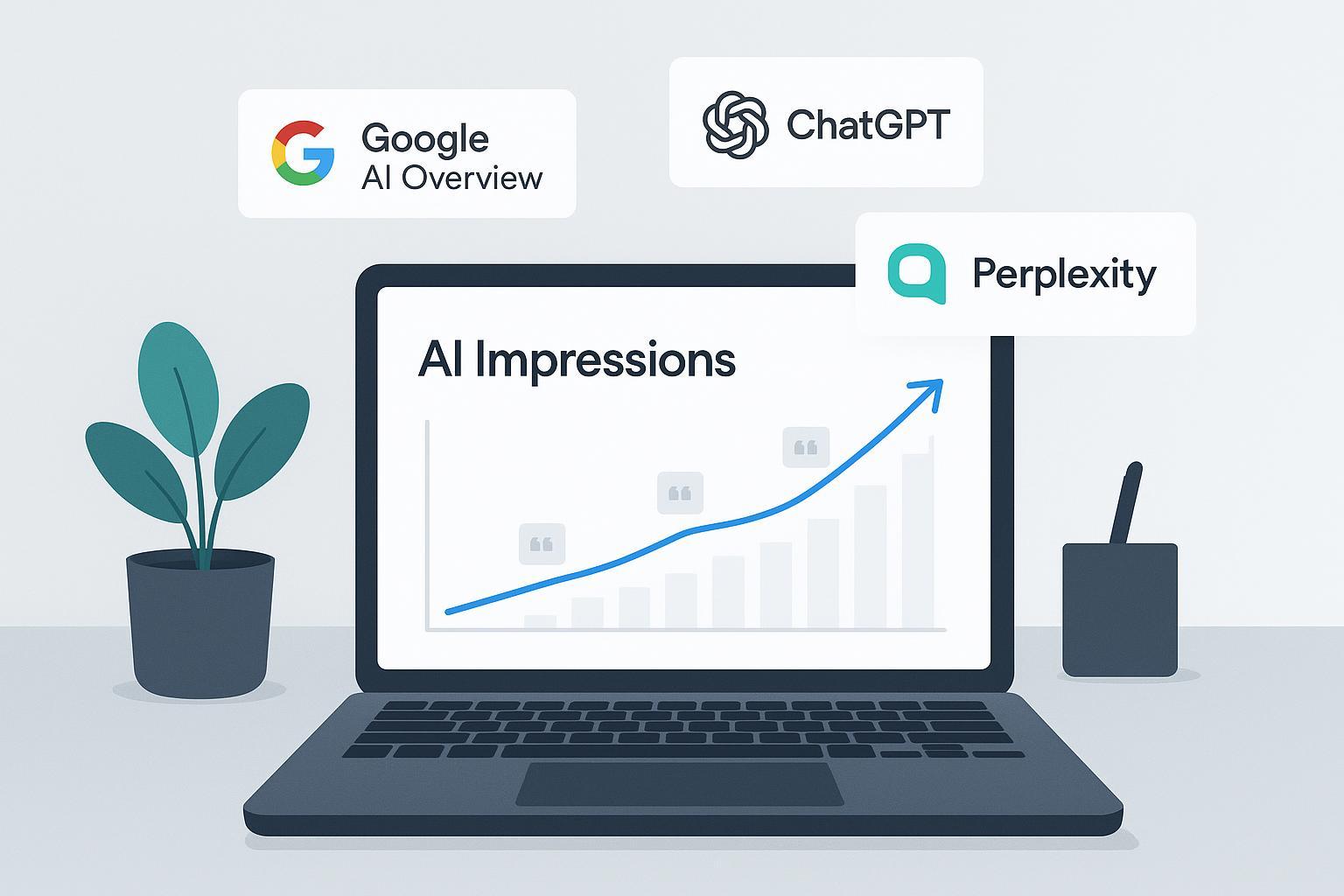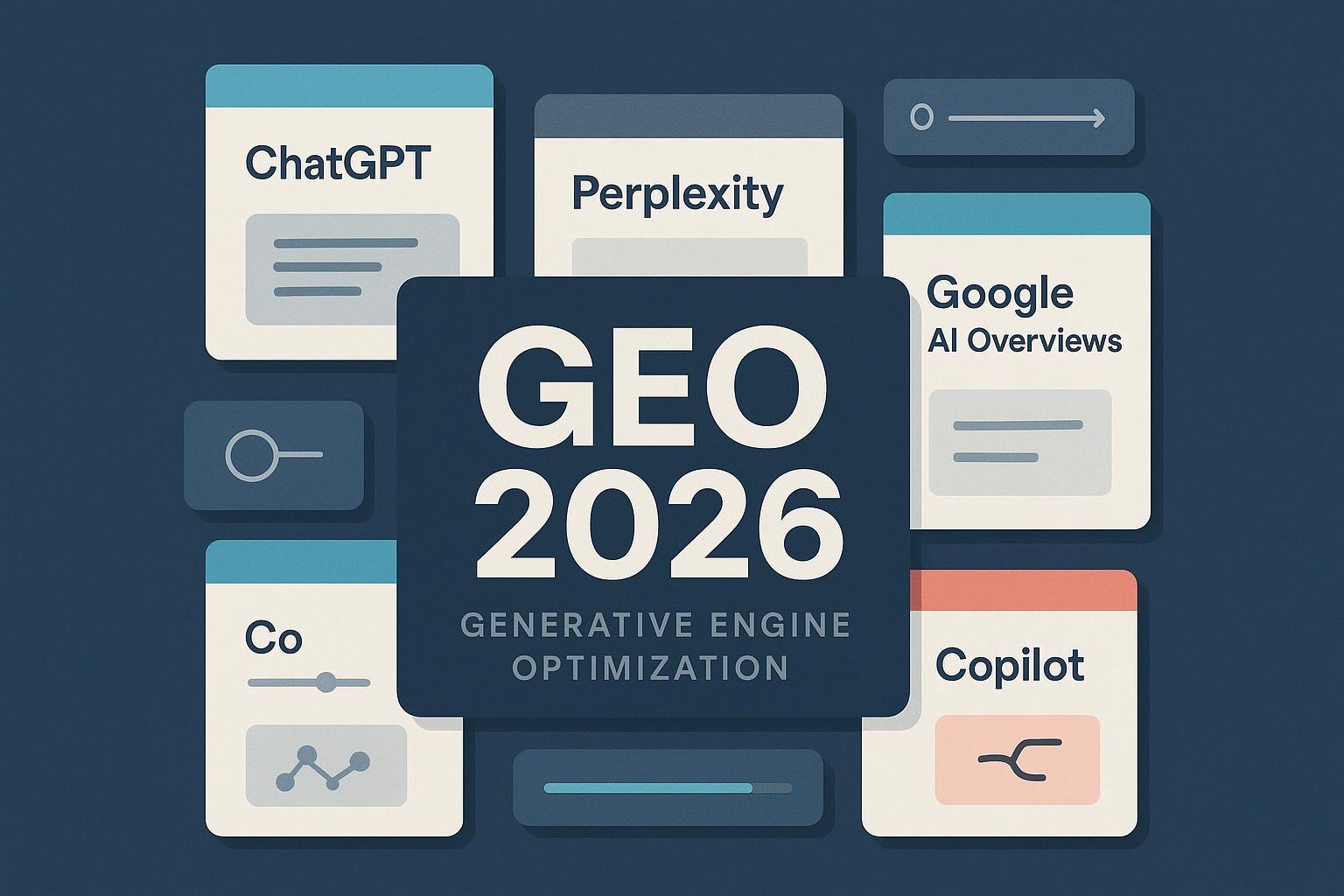Future-Proof Content Strategy for AI Search Algorithms (2025)
Proven best practices for future-proofing content strategy against rapidly evolving AI search algorithms in 2025. Actionable frameworks for E-E-A-T and intent clusters.


If your content plan still assumes “10 blue links,” you’re already behind. In 2025, discovery happens across AI answer engines (Google AI Overviews/AI Mode, Bing Copilot, ChatGPT Search, Perplexity) that synthesize, cite, and sometimes satisfy the query without a click. Independent studies show meaningful shifts: for affected queries, position‑one clicks declined after AI Overviews rolled out, with ranges and effects that vary by intent, market, and timeframe (see the 2025 analyses by Ahrefs on CTR drop magnitude and Semrush on nuanced zero‑click patterns). The play now is to engineer content that’s easy for LLMs to comprehend, verify, and cite—and to build an operations loop that adapts as algorithms change.
Below is the field‑tested framework we’ve used with brands to preserve and grow visibility in the AI search era. It’s pragmatic, high‑signal, and designed to be implemented immediately.
1) Shift from keywords to intent clusters and entities
Classic keyword targets miss how answer engines reason. They map intent to entities and extract crisp, verifiable statements.
Do this:
-
Map intents to clusters, not single queries
- Build 5–10 question formats per topic (what/why/how/cost/alternatives/pros‑cons). Add follow‑ups likely to appear in conversational threads.
- For each cluster, define canonical entities (people, orgs, products, locations) and synonyms. Keep names, acronyms, and relationships consistent across pages.
-
Engineer answer‑first structures
- Place a 2–4 sentence summary box near the top that directly answers the primary intent. Follow with evidence, detail, and next steps.
- Use scannable H2/H3s that mirror likely sub‑questions. Keep paragraphs tight; LLMs reward clarity.
-
Cite authoritative sources inline
- When you assert a fact, include a precise citation to a canonical source. This mirrors how answer engines surface citations and helps raters validate quality. Google’s guidance emphasizes helpful, people‑first content and transparency in its AI features and your website documentation (Search Central, 2024–2025).
Common pitfalls and fixes:
- Pitfall: stuffing long introductions. Fix: lead with the answer, then context.
- Pitfall: inconsistent entity references across pages. Fix: maintain an editorial “entity sheet” for each core topic.
- Pitfall: burying specs, pricing, or eligibility details. Fix: add a compact facts table or bullet block near the top.
2) Operationalize E‑E‑A‑T, don’t just talk about it
Experience, Expertise, Authoritativeness, and Trustworthiness (E‑E‑A‑T) must be visible and machine‑parsable.
-
Make authorship verifiable
- Prominent bylines; detailed author pages with credentials, roles, and relevant first‑hand experience. Link to authoritative profiles.
- For sensitive topics, add editorial review or medical/legal review notes as appropriate.
-
Show your work
- Add update dates and change logs. Include first‑hand evidence: data, screenshots, and test methodology.
- Link to primary sources (standards bodies, official docs). Avoid secondary summaries when citing key facts.
-
Structure author and organization entities in JSON‑LD
- Pair visible bios with Person and Organization schema (more in section 3). This helps engines connect content to real‑world entities and reduces ambiguity.
Tradeoffs:
- Heavy credentialing can slow publishing. Solve with templates and an editorial checklist so bios, review notes, and citations don’t get skipped under deadline pressure.
3) Make your content technically legible to AI systems
Answer engines draw from the open web. There is no magic “AIO tag,” but clarity, structure, and parity matter.
- Implement foundational structured data
- Organization, Person (authors), and Article are the minimum for most content. Extend with Product, Review, VideoObject, and ImageObject when applicable.
- Use JSON‑LD, ensure parity with visible content, and validate using Google’s Rich Results Test and the Structured data Search Gallery (Google Search Central).
Example: Organization + Person + Article (trim to your needs)
{
"@context": "https://schema.org",
"@type": "Article",
"headline": "Future‑Proofing Content for AI Search",
"datePublished": "2025-10-12",
"dateModified": "2025-10-12",
"author": {
"@type": "Person",
"name": "Alex Rivera",
"jobTitle": "Director of Content Strategy",
"sameAs": [
"https://www.linkedin.com/in/alexrivera",
"https://scholar.google.com/citations?user=example"
]
},
"publisher": {
"@type": "Organization",
"name": "Acme Content Co.",
"logo": {
"@type": "ImageObject",
"url": "https://www.example.com/logo.png"
},
"sameAs": [
"https://x.com/acmecontent",
"https://www.crunchbase.com/organization/acme-content-co"
]
}
}
-
Respect recent changes to rich results behavior
- HowTo rich results were deprecated, and FAQ rich results are restricted primarily to authoritative domains. Don’t expect these to appear broadly, though the markup can remain if it aids comprehension. Google documents these policy changes in its 2023 update note within the Search Central blog; current guidance is reflected throughout the Search Gallery.
-
Ensure crawlability, indexability, and performance basics
- Avoid accidental noindex, blocked JS/CSS, and slow LCP. These fundamentals still gate eligibility for any surface.
4) Publish in multi‑modal formats that AI can cite
LLMs increasingly incorporate video and images. Make your media easy to discover, parse, and attribute.
-
Video
- Add transcripts on the page; captions on YouTube. Provide VideoObject schema (name, description, thumbnailUrl, uploadDate, duration, embedUrl/contentUrl) and, when relevant, a video sitemap. See Google’s Video SEO implementation guidance.
- Place the video near the matching text section and use descriptive, intent‑aligned titles.
-
Images
- Use descriptive filenames and alt text. When images carry key information, include ImageObject schema with caption and author where relevant.
-
Podcasting distribution
- With Google Podcasts deprecated, route distribution through YouTube/YouTube Music for maximum discoverability in Google’s ecosystem.
Tradeoffs:
- Producing multi‑modal assets increases costs. Counter by repurposing: script → article → video primer → short clips → image summary cards.
5) Build a measurement and iteration loop (weekly cadence)
Future‑proofing is an operating system, not a one‑time project. Establish a standing workflow:
-
Track surfaces and signals weekly
- Google AI Overviews/AI Mode: inclusion rate, citation frequency, landing page mapping.
- Bing Copilot, Perplexity, ChatGPT Search: citation presence and sentiment. Note that OpenAI’s product describes a search experience surfacing live sources with citations (see OpenAI’s “Introducing ChatGPT Search” announcement, 2024/2025 updates).
-
Define leading indicators and KPIs
- Share of queries with your brand cited; platform‑level referral traffic where measurable; sentiment distribution; entity consistency (author/org); time‑to‑refresh after updates.
-
Run controlled experiments
- Change one variable at a time (summary box, schema addition, title rewrite), then observe for 4–8 weeks.
Example monitoring workflow (mid‑article example; ~150–180 words)
Use Geneo to centralize AI‑surface visibility across Google AI Overviews/AI Mode, Bing Copilot, Perplexity, and ChatGPT Search:
- Create a query set that mirrors your intent clusters (primary + follow‑ups).
- Add brand and competitor entities. Enable sentiment tracking on citations.
- Schedule weekly crawls. Review: inclusion rate by engine, citation snippets, linked landing pages, and sentiment trends.
- Tag pages with schema or summary changes and annotate release dates.
- Compare before/after windows (4–8 weeks) for each change; promote winning patterns to your content playbook.
Disclosure: Geneo is our product; the workflow above is provided for transparency and can be replicated with alternative tools.
6) Advanced playbooks you can deploy now
Pick what fits your context and bandwidth. No single tactic is a silver bullet.
-
Localization and L10N
- Localize entities (company name variants, author bios, social profiles). Translate summary boxes natively, not word‑for‑word. Test AI surfaces per locale.
-
Content pruning and restructuring
- Consolidate overlapping pages into comprehensive, answer‑first hubs. Remove thin content that dilutes authority. Maintain 301s and update internal links.
-
Schema at scale
- Standardize Organization/Person/Article templates across your CMS. Automate VideoObject/ImageObject where media exists. Validate in CI/CD before publishing.
-
Team enablement
- Provide prompt banks for editorial research (e.g., adversarial questions to pressure‑test claims). Train editors on entity consistency and citation standards. Establish a release notes calendar to correlate changes with AI‑surface shifts.
For practical examples of how teams implemented these moves in 2025 across industries, see our cross‑industry write‑ups in the AI Search Strategy Case Studies.
7) Common failure modes (and how to recover)
-
Chasing speculative “AIO hacks” without evidence
- Recovery: Anchor to official guidance like Google’s AI features and your website and your own experiment logs.
-
Confusing rich results with answer‑engine eligibility
- Recovery: Focus on clarity and parity. Use the Structured data Search Gallery to align with supported types; don’t expect deprecated FAQ/HowTo visuals.
-
Ignoring click behavior changes
- Recovery: Model scenarios with and without AIO. Studies in 2025 show declines in top‑position CTR for affected queries (Ahrefs), but also intent‑dependent variability (Semrush). Rebalance goals toward citations earned, brand lift in AI answers, and assisted conversions.
-
Treating AI engines as monoliths
- Recovery: Track each surface separately. For example, Google’s 2025 update reported increased usage where AI Mode/Overviews appear, which is not the same as guaranteed outbound clicks (see Google’s May 2025 AI in Search update).
-
Lack of change management
- Recovery: Institute an editorial‑technical change log, weekly standups, and a 30/60/90 roadmap.
For integrating AI answer‑engine visibility into your regular reporting and stakeholder updates, we outline a pragmatic approach in our post on the October 2025 Google algorithm update.
8) Your 30/60/90‑day rollout plan
30 days — Foundation and quick wins
- Audit top 50 URLs by revenue/impact. Identify intent clusters and primary entities.
- Add answer‑first summary boxes to 10 priority pages.
- Implement Organization, Person, and Article schema templates; validate.
- Stand up weekly AI‑surface monitoring and a change log.
- Produce one video or visual explainer for a high‑intent page; add VideoObject schema.
60 days — Scale and structure
- Consolidate overlapping content into hubs. Update internal links and redirects.
- Extend schema coverage (Product, Review, VideoObject/ImageObject where applicable).
- Localize two high‑value clusters for your top secondary market.
- Run 2–3 controlled experiments (titles, summary formatting, citation density).
- Expand monitoring to competitors; benchmark sentiment and inclusion share.
90 days — Optimization loop
- Promote winning patterns to team SOPs.
- Automate schema generation and validation in your CMS/CI.
- Establish a monthly executive roll‑up: inclusion share, citation frequency, sentiment, and revenue proxies.
- Plan Q2 content: multi‑modal assets per hub, plus gaps discovered in monitoring.
9) QA checklist before every publish
- Answer‑first box (2–4 sentences) directly addresses the primary intent.
- Inline citations to canonical sources for key facts (1–3 per page).
- Author bio present, verifiable credentials, and Person schema.
- Organization schema with logo and sameAs links.
- Article schema with accurate dates; change log entry added.
- Media assets optimized: transcripts, captions, VideoObject/ImageObject as applicable.
- Page passes basic performance and indexability checks.
- Monitoring annotation created with target queries and expected outcomes.
Closing
Algorithms will keep changing; your advantage is an operating system that measures, learns, and iterates. If you want a single place to track citations, sentiment, and inclusion across AI answer engines while you run controlled experiments, consider using Geneo to centralize the loop and reduce manual overhead.
Soft CTA: Explore how Geneo supports cross‑engine monitoring, sentiment insights, and team workflows at your pace—free trial available on the site.





